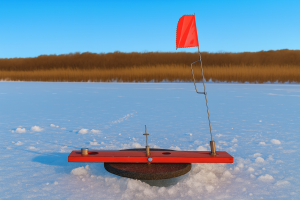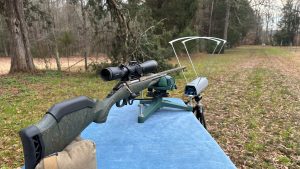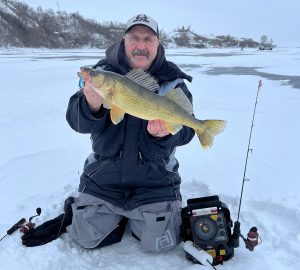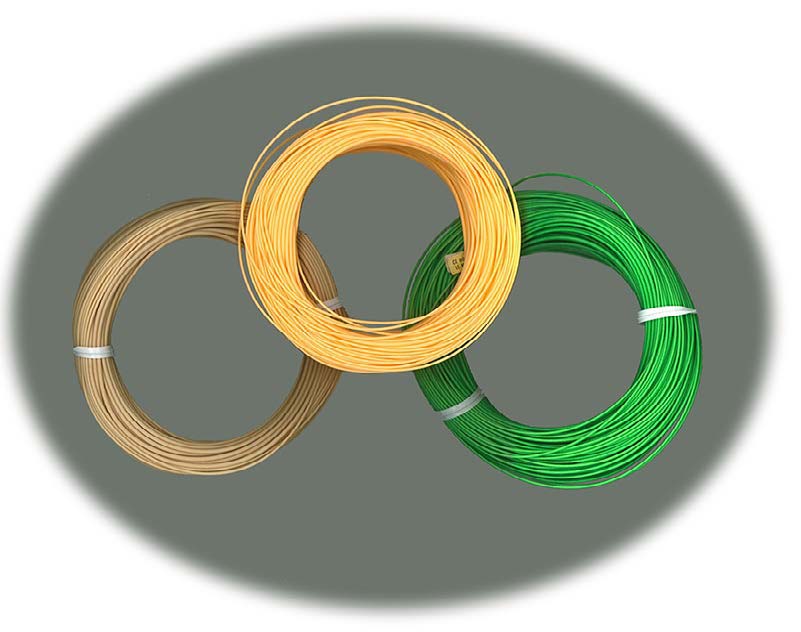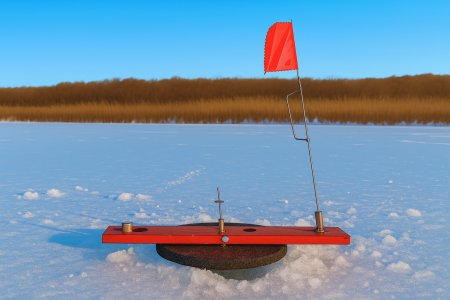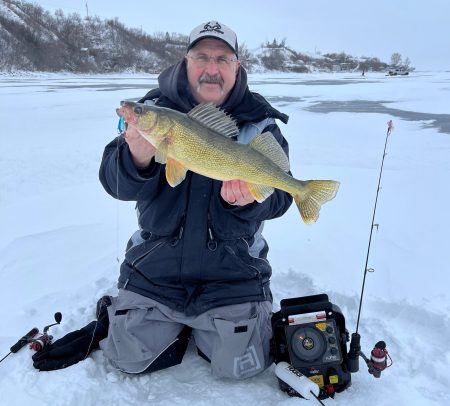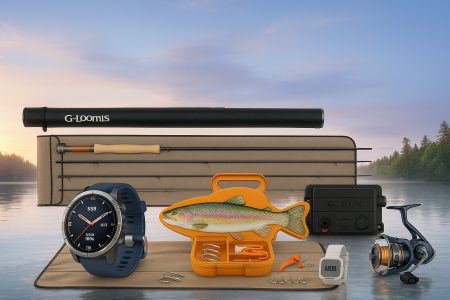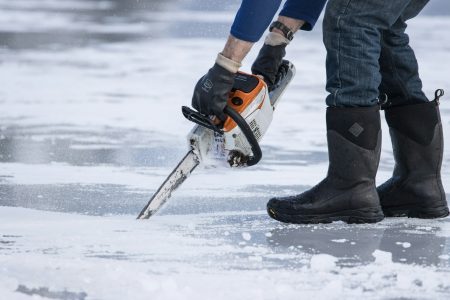Many people, especially beginners, find it baffling when they start looking at lines and rods and reels in combination with one another. It’s not all that complex once you understand the elements that control how they all fit together. The type of rod and reel to buy is dependent upon what “weight” of line you’re using. Line weight and function controls everything in terms of the rest of your tackle.
The vast majority of fly lines are about 75 feet long, and they come in various weights, tapers, functions, and colors. Depending upon where you are fishing, what you are fishing for, and how you want to fish, all those factors must be considered.
Fly Line Construction
Most modern fly lines are constructed from vinyl material that forms the coating and has a strong core in the middle. The core is tough, and it allows anglers to knot to the fly line. The vinyl coating is supple and will break if you try to tie a leader or backing directly onto it, especially if the line has no core. Just as importantly, the core controls the line’s strength, stretch, and stiffness.
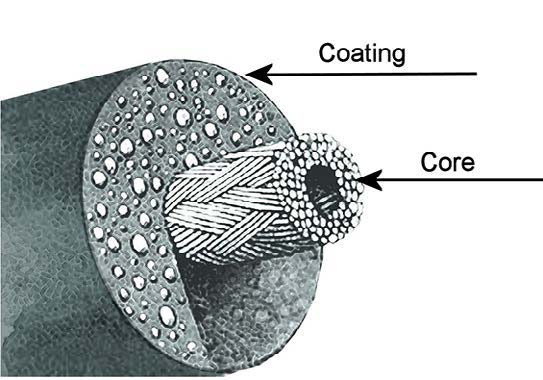
All fly line cores are designed to be stronger than the heaviest tippets that would normally be used with them. Line stretch is important because if there is too much stretch, the line will be too floppy and difficult to cast. If it isn’t stretchy enough, the line will have memory problems, and you won’t be able to get the line to straighten out. It will retain its loops like a coil spring when stripped off the reel. Stiffness, in many ways, is similar to stretch, but stiffness is targeted more toward making the line the right stiffness for the temperatures when you’ll be fishing. Hot temperatures can cause some lines to become too supple. They’ll then get too floppy to cast well. The cold can cause lines to get too stiff, as well, and develop memory problems.
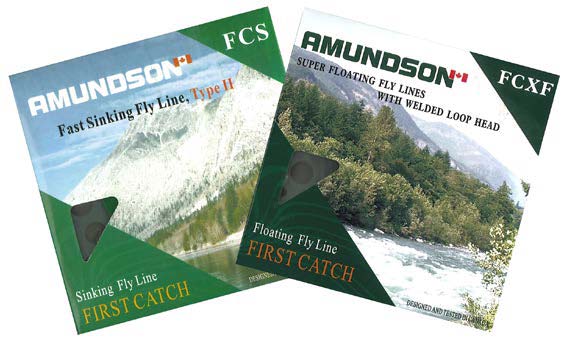
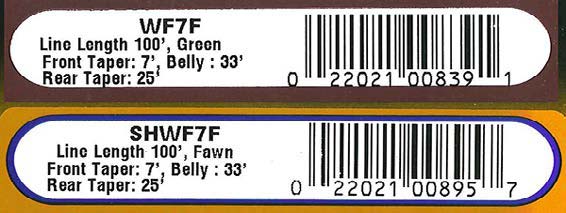
Some lines (some clear intermediate sink lines in particular) have no core, so you cannot knot directly to them. In that case, you have to either use a leader loop or a whipped loop.
Fly Line Weights
Fly lines must be heavy in order to get the fly out any distance from the rod tip, so they have to have some weight.
Line weight designations range from 1 to 15, with 1 being the lightest and 15 the heaviest. These numbers are simply a relative scale of weight and do not indicate the actual weight of the line. However, each number represents a standard weight in grains for the first 30 feet of the fly line, as established by the American Fishing Tackle Manufacturing Association (AFTMA). For example, the first 30 feet of a 6-weight fly line should weigh between 152-168 grains, with the optimal weight being 160 grains.
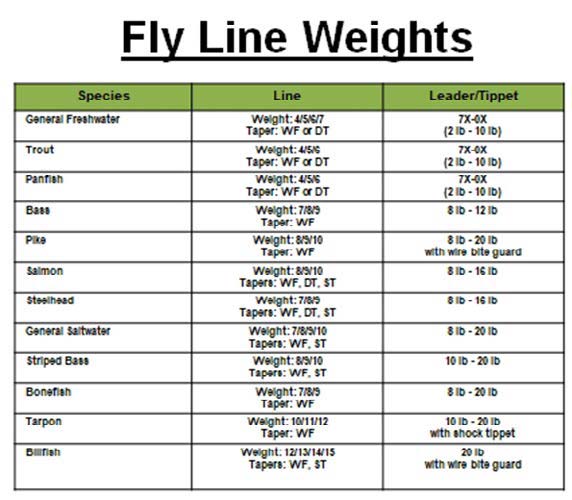
Beginners should be concerned with weights 5 through 9. These are the line weights most commonly associated with trout, bass, pike, steelhead, and salmon/ larger saltwater species. For trout fishing, consider weights 5 to 7. Steelhead fishermen will want to consider lines 7 through 9, and salmon/saltwater anglers will want to use weights 6 through 15, depending on the species. The best all-around line for the beginner is a 6 or 7-weight; 6 if you want to fish strictly for trout and pink salmon, or 7 if you want to try steelhead or coho salmon as well.
Fly Line Taper
Most fly lines are comprised of tapered sections. They include the tip, front taper, belly, rear taper, and running (shooting) line. The tip is narrow and delicate for presenting the fly softly. The front taper runs from thin to fat, to roll over the cast smoothly and evenly. The belly is heavy and carries the line out. The rear taper goes from fat to thin. The running line is thin and light, so it can be pulled forward by the front taper and belly, useful for distance casting.

Fly lines come in a variety of tapers and styles. They include level, double taper, weight forward, and shooting taper. A level taper line is designed (as the name implies) to be the same diameter from end to end. Generally speaking, it is the least expensive of the fly lines, but also has limited use. Double-taper and weight- forward lines are by far the most commonly used lines, and beginners should choose one of these two tapers. A shooting taper (shooting head) is a short, heavy line used for distance casting.
Double taper lines begin thin at one end and taper to their maximum diameter within about the first 25 feet. The diameter remains the same over the center 25 feet or so, then tapers back down to thin again at the other end.

Line Density.
The two end tapers are mirror images of each other. Because of this, the line weight is evenly distributed over its length. This allows the fly-fisher to make delicate presentations of the fly without disturbing the water too much. This style also has the added advantage of being reversible. Since both ends of the line are tapered in the same way, when one end wears out, anglers can reverse the line and continue to use it. Double taper does not offer the caster the option of long distant casts, however. A weight-forward style does, but if you fish clear “skinny” water with spooky fish, where delicacy takes precedence over distance, then double taper is the line for you.
Weight-forward taper sacrifices delicacy of presentation for distance. The line is designed to taper very quickly to its belly and then quickly taper back down to a long, thin shooting line. This design distributes the majority of the line’s weight into the taper and the belly (the first 30 feet). The first 30 feet are cast by the rod and caster, while the shooting line simply follows the head out onto the water when the cast is released or “shot.”

There is also a specialty weight-forward line called a shooting taper or shooting head. It is a specialized line about 30 feet in length that incorporates the taper of a weight-forward, without any shooting line. Dacron backing is tied to the butt, and the line is virtually hurled out over the water, much like a spin-caster hurls a lure. This setup is designed strictly for distance casters. Beginning fly-fishers need not concern themselves with it. So, that’s all there is to line tapers. They’re really not too complex.
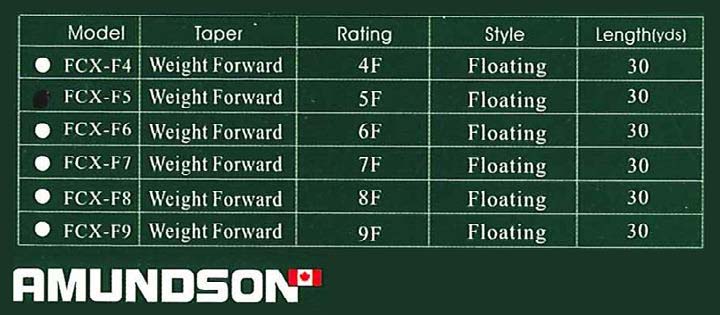
Fly Line Functions
Line function is a simple consideration. The line is de- signed to either float or sink, or do both at the same time. Thus, we have three function designations: floating, sinking, and floating/sinking (commonly called sink tip).
Dry lines (or floating lines) are the simplest. They simply float, and there are no subdivisions of this function. Floating line is used when fishing dry flies, and it can also be used to fish wet flies or even nymphs if the water is shallow enough. Floating lines float because their vinyl coating is impregnated with air bubbles. If you cut the line open, it looks like the inside of an Aero chocolate bar. Wet lines (or sinking lines) are designed to sink. They sink because their vinyl coating is impregnated with tungsten chips. The more tungsten chips per inch of line, the faster the line sinks. That’s why sinking lines have varying sink rates.
Sinking Lines and Ratings
Sink rates vary in name between manufacturers. Generally speaking, they are as follows:
Slow (or intermediate) sinking: Type I Sinking, Type II Fast Sinking, Type III Extra Fast Sinking, Type IV Hi-D, Type V super Hi-D, and lead core.
The actual rate at which these lines sink varies between 1.5 inches per second to 6.0 inches per second or greater. To get a good idea of the actual sink rates, pick up some manufacturer’s catalogs. For the beginner, I recommend a fast-sinking or extra-fast sinking fly line. These two will perform admirably in most wet-line situations.
Besides the standard sinking lines, companies have developed what they call a level sink line. In a standard wet line, regardless of the sink rate, the tungsten chips are distributed evenly throughout the vinyl coating of the line. Because the line tapers towards the end though, there is not as much tungsten in the tip as there is in the belly, and the tip does not sink as quickly as the belly. That gives you a belly or “U” in your line as it sinks, and the longer you allow it to sink, the bigger the “U” belly gets.
Level sink lines have more tungsten per inch in the tapered portion of the line, so this sinks more evenly across its length. This style can allow anglers to get their fly down to the bottom at the same time the rest of the line gets there, instead of having the belly hitting the bottom before the fly gets close. Sometimes you want that. Other times you don’t, depending on the type of insect you are trying to imitate.
The floating/sinking combination lines (sometimes referred to as sink tip lines) combine a floating line with a front portion that sinks. It works well when fishing shallow areas in lakes or rivers, where a floating line won’t get your fly deep enough, fast enough.
However, a full sinking line can carry the fly too deep too fast, or get caught up in rocks and debris in a stream. There are three classes of floating/sinking combinations and they vary only in the length of the sinking portion of the line. A sink tip line has 10 feet of sinking line at the tip, a sink taper has 20 feet, and a sink head has 30 feet. The sinking portion of a floating/sinking combination line comes in various sink rates, as do the full sinking lines as described above. For the beginner, these lines are not a necessity.
Fly Line Color
Fly lines come in all kinds of colors, from pure white through brown, including various fluorescent colors.
Sinking lines are usually restricted to browns, greens, or grays to blend in with the weeds and water, or else they are clear.
Floating (dry) lines, however, need to be seen, so they come in a wide range of colors. Most fly-fishers prefer the tan and bone-colored dry lines. These can be easily seen in most light conditions while not being too flashy.
I personally prefer the fluorescent green color. I find that it is better seen under low-light conditions than the colors are, without being gaudy, like the florescent orange. Color is a personal choice, however, so take a good look around and pick a color that you can see well under the low light conditions of dusk. Line color doesn’t seem to affect the fish. If a fish sees your line, then it will usually react regardless of the line’s color.
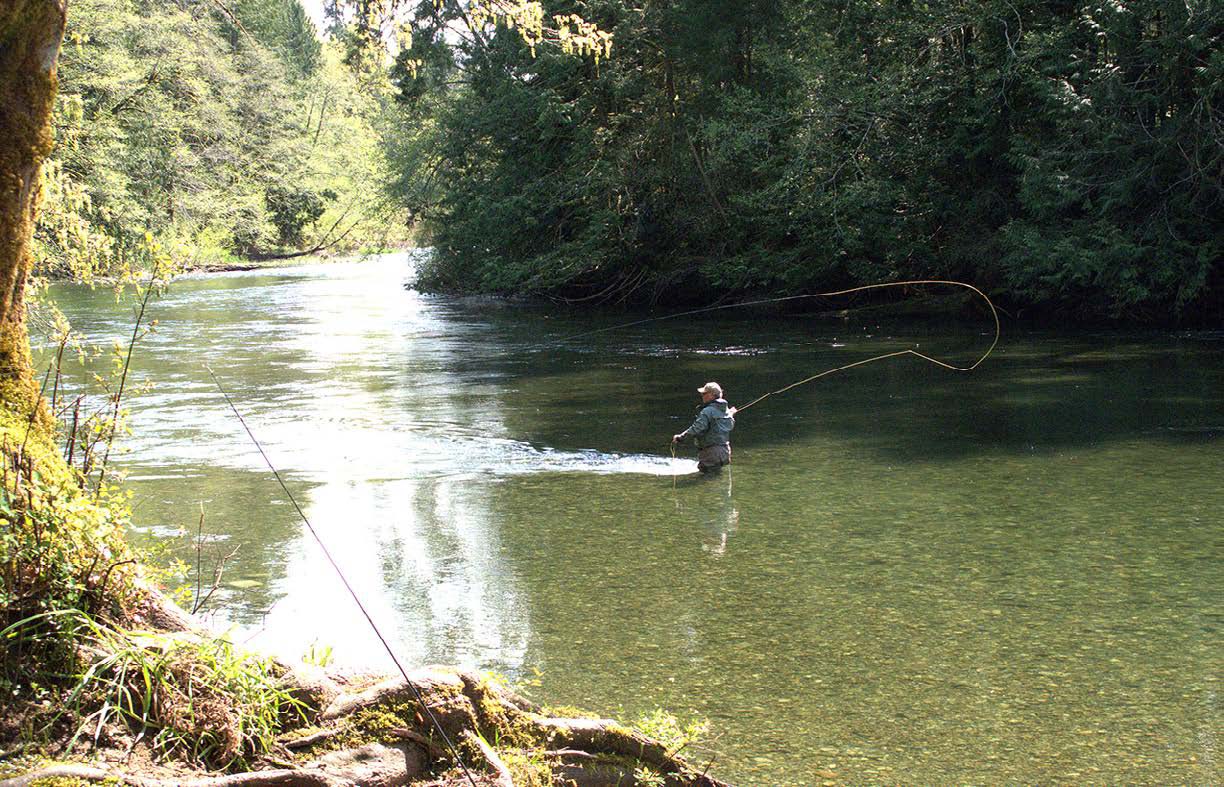
The Fly Line Labeling System
All this information can seem a little overwhelming to the beginner, but don’t get disheartened.
AFTMA has come to our aid to design a system to help identify all the various aspects of fly lines in one simple formula. It lists line taper, weight, and function on one label in that order. That information, or something very similar, can be found on every box of line.
If you wanted to buy a 6-weight, weight-forward, floating line, you simply have to look on the box for a label that says “WF-6-F.”
Another example: DT-5-F/S designates a double taper, 5-weight, floating/sinking line. The sink rate would be on a separate sticker on the box, as well as whether it was a sink tip, sink taper, or sink head.
A third example might be: WF-5-S Type II. That would designate a weight forward 5-weight sinking line, with a fast-sink sink rate. Take an hour and drop into your local sporting goods store or fly shop and ask to see some lines. I’m sure you will pick up on the labeling system very quickly.
That’s about it for the basics of fly lines. There is a lot of information in here, but it’s all important and it won’t take long for you to get familiar with it. It all makes sense and is applicable to everything you do as far as fly-fishing goes.
Take some time to go over this article a piece at a time and learn this information. Like I said, your rod, reel, and the rest of your tackle depend upon what weight of line you will be fishing with, and your line weight is dependent on the size and species of fish you want to pursue. So, it’s critical that you learn this information and carry it with you when you go to buy your tackle.
Per our affiliate disclosure, we may earn revenue from the products available on this page. To learn more about how we test gear, click here.

